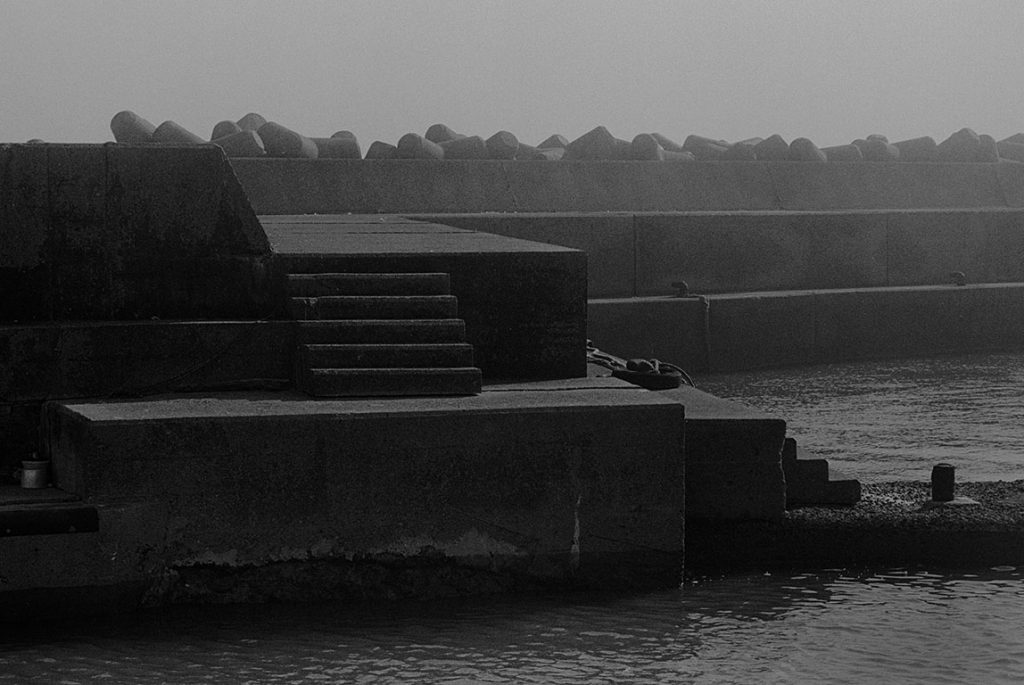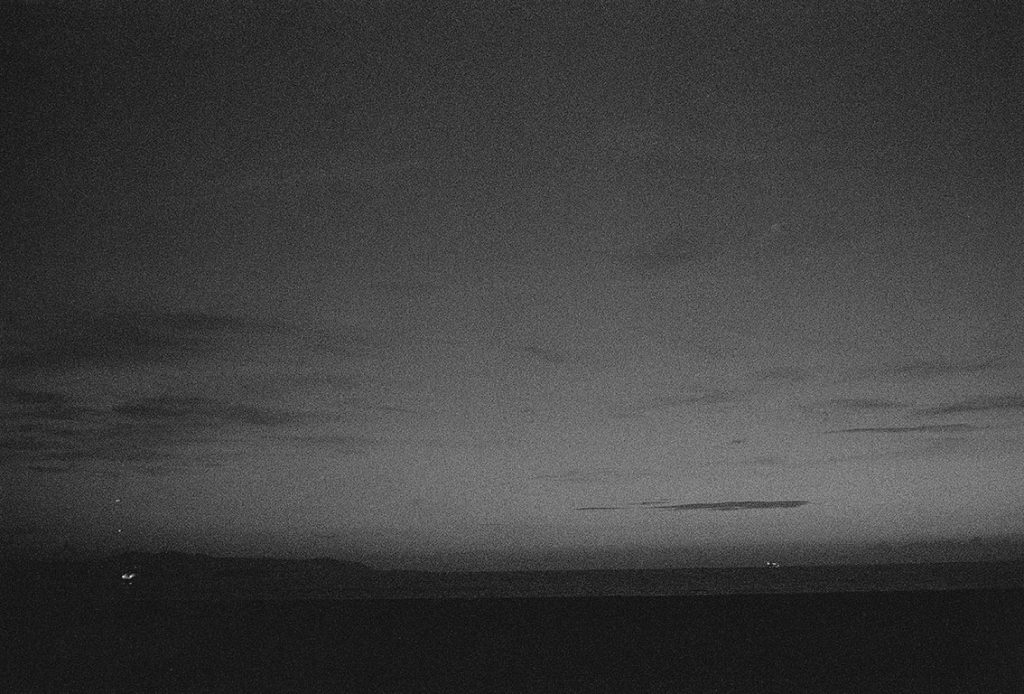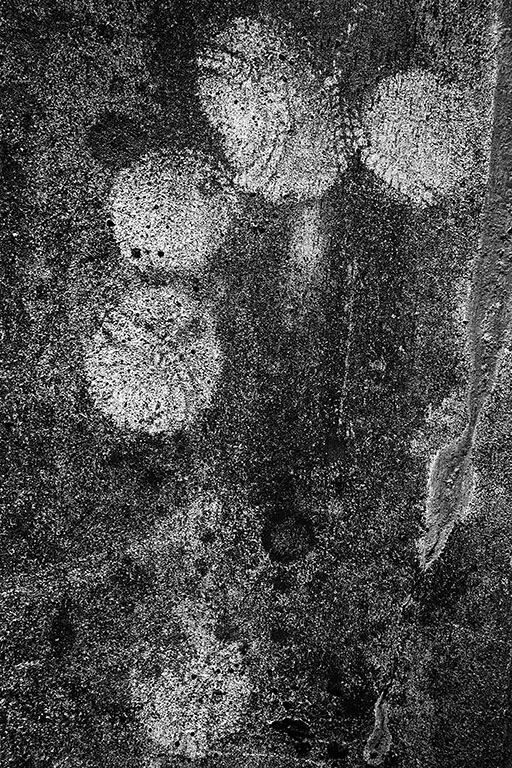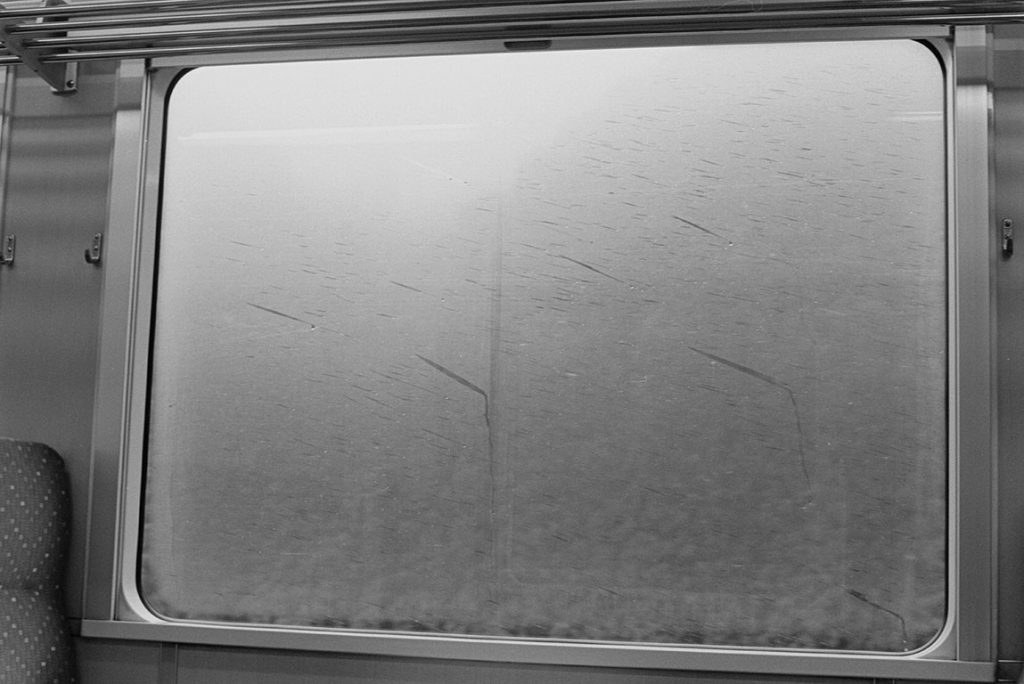
Abstract expression is hardly my forte but sometimes I find it creeping into some of my work. In this episode of The Monochrome Chronicles, I’ll show you some of these images. Not infrequently I find myself torn between conscious and subconscious elements in my photography. The photographer inside me urges me to yield to the subconscious. The critic in me favors a conscious approach. I would be hard pressed to say which trend predominates. In this episode, I’ll yield to the subconscious side and show you abstract expressions.

Mostly, though, this is an impressionistic view from my hotel window. It reflects the calm serenity of an evening in Boso Peninsula, Chiba. It is far from being a photograph of nothing. In which case, can I say it is not nothing?

I climbed onto the pier and walked all the way to the end. I was all alone, no other people in sight. This scene with the two sets of steps leading to…where?… captured my imagination. Somehow the concrete, the water, the sea air, the late afternoon sun, my wanky exposure and my mistaken use of a yellow filter, all these elements combined to create this moody, other worldly image. Sometimes the elements of a photograph seem to re-assemble themselves and create an entirely different image.

This image exists outside of time and place. It expresses only itself. A viewer could easily get lost in such images. This is very satisfying for me as a photographer. I did not consciously plan this effect, it just happened. Maybe it holds a subconscious message?

This image is, in its way…well, kind of fun. Four imprints of a baseball on a concrete wall easily conjure up images of kids playing a sand-lot game on a sunny summer afternoon. The reality would seem to be a teenager practicing by throwing a ball against the concrete wall.
Now I see the image from another point of view. How would a baseball leave a white impression on the wall? Also, it is hardly likely that the kid would make such an orderly pattern on the wall by throwing a ball five times. One of the impressions is distorted unnaturally and could be two overlapping impressions. The seams on the baseball are impressed clearly, but maybe too clearly.
Which leads to my interpretation of the image as an abstract expression. This image expresses the concept of “I’ve been here.”


Several interpretations of this image are possible depending on the viewer’s perspective. From a photorealist point of view, it shows defacement of public property this is a small segment of a street here in Tokyo. Alternatively, it could be a piece of graffiti art. Perhaps someone had been given an assignment to decorate a Japanese folding fan as a creative exercise. The question would then be why choose to do so on a public street.
To me this image is an abstract photograph that makes the statement, “I’ve been here.”
To decipher the message here requires knowledge about the context. This is a stone from the foundation of a Japanese castle built more than 400 years ago. The stonecutters of that era had to shape the stones individually and occasionally would carve a symbol on the side of a stone as a sort of identifying signature. Embellishments such as this served no function and required extra work by the stonecutters, but in essence were symbols. Now, some four centuries later, the carving is like a message from that ancient stonecutter. Maybe it says, “I was here.”


My eyes are riveted to this image every time I see it, but only briefly. It seems to portray stationary movement, and infinite repetition. Stationary movement, of course, is an oxymoron but while my brain recognizes that both the original subject and the photographic image are stationary, still my imagination sees movement. Similarly, infinity is an abstract concept but the repetition within the image suggests that the pattern could be infinite.
Abstract photography — or abstract photographs — defy description. There, I’ve written myself into a corner. To write anything further would only violate my premise.
It’s funny how the mind works sometimes. Usually when I’m behind the camera, I’m working on a series, I have conscious goal in mind. And yet when I review the contact sheets, occasionally a frame pops up that is completely outside the series at hand. I have to set that image aside to focus on the series. Such out-of-scope images remain in the background, though, and one day re-emerge, mixed with others of a similar ilk and create their own series (or mini-series). The photographs in this episode of The Monochrome Chronicles constitute an example of this. Only in retrospect did I realize that the thread that strings them together is the concept of abstract expression. I wonder whether I would claim this as my “work”? Fortunately, as the editor of The Monochrome Chronicles, that question is beside the point (or am I just forsaking my responsibility as editor?).